Russia isn’t the only country where violations of personal freedoms and censorship seem to be mounting by the day, but it’s surely the most confused: ask any of the persecutors what they hope to achieve, and you won’t get a convincing answer. Moral topsy-turvyness and unforeseen consequences are very much at the heart of what Cheek by Jowl’s director Declan Donnellan, its designer Nick Ormerod and their Russian actors seem to be aiming for, whether with intentional links to the host country or not it’s impossible to say, in a relentless but also unpredictable take on one of Shakespeare’s harshest hybrid dramas. This pacy and well-pruned version isn’t easy to warm to, but if you meet it half way, the impact will stay with you.
Most home-grown productions I’ve seen have tried to be too ingratiating, getting easy laughs from the improvised game-playing of the “fantastical duke of dark corners” who absents himself only to don a monkish disguise in an attempt to get a grip on his city’s perceived decadence and see how his stern deputy cracks down on it. In this production, the more he tries to shine a light on human behaviour, the more nightmarish his journey becomes. The greater the clarity of the opening scenes, the more terrifying and murky the descent into the abyss.
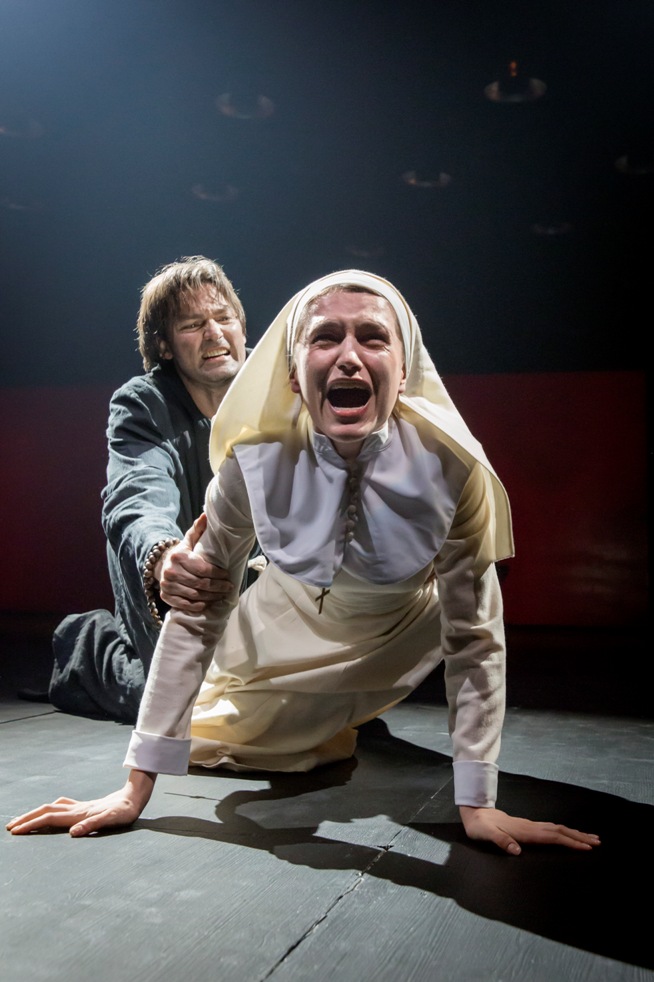 Cheek by Jowl’s disconcerting mixture of clean lines, ambiguity and terror pays off by degrees. This is the polar opposite of the Vakhtangov Theatre’s approach in the last Russian visit to the Barbican. Some liked its chuck-everything-at-it approach, the obscurity of its multiple references, the constant use of music in that company’s Eugene Onegin; I hated their Uncle Vanya. Anyway, the focus on the text, the absence of all but street noises and the occasional electronic terror until the mid-point here are hugely refreshing. All we have on stage at the start are five giant red boxes, overhead lamps - Sergey Skornetskiy's lighting design as realised by Pavel Bolotin is subtle but extraordinary, especially when we first see novice Isabella at prayer - and the entire company, the pack stalking the presumably paranoid Duke before he takes his leave.
Cheek by Jowl’s disconcerting mixture of clean lines, ambiguity and terror pays off by degrees. This is the polar opposite of the Vakhtangov Theatre’s approach in the last Russian visit to the Barbican. Some liked its chuck-everything-at-it approach, the obscurity of its multiple references, the constant use of music in that company’s Eugene Onegin; I hated their Uncle Vanya. Anyway, the focus on the text, the absence of all but street noises and the occasional electronic terror until the mid-point here are hugely refreshing. All we have on stage at the start are five giant red boxes, overhead lamps - Sergey Skornetskiy's lighting design as realised by Pavel Bolotin is subtle but extraordinary, especially when we first see novice Isabella at prayer - and the entire company, the pack stalking the presumably paranoid Duke before he takes his leave.
It’s hard work for the audience at first. This is one of Shakespeare’s most rhetorical plays, full of dense thought and microscopic examination of mixed motives. One’s biggest hope is that the actors will have been directed to clarify the ideas through their mode of speech, but here you have to cope with fairly swift Russian delivery and the original text in the supertitles. But you won’t miss the rapid trajectory in which each of the characters implodes. Anna Khalilulina’s Isabella (pictured above with Alexander Arsentyev's Duke), pleading for a brother whose only crime has been to make his girlfriend pregnant, breaks her fear and reserve in front of seemingly impassive deputy Angelo (Andrei Kuzichev) in sudden feet-kissing and physical pleas which partly account for his lustful attraction to supposed purity.
 These two are compelling, Khalilulina especially in that you can read every emotion in her face and body language, making us identify with her predicament. In comparison, Alexander Arsentyev’s Duke is rather too low-key: many of his edgy confidences don’t carry even in a relatively small arena like the Silk Street Theatre (the Guildhall’s rather sterile larger performing space). But he’s certainly a man of multiple personalities, and his uncertain machinations explode in a riot of movement and music. Pavel Akimkin’s score, when it bursts into colour, proves well worth the wait.
These two are compelling, Khalilulina especially in that you can read every emotion in her face and body language, making us identify with her predicament. In comparison, Alexander Arsentyev’s Duke is rather too low-key: many of his edgy confidences don’t carry even in a relatively small arena like the Silk Street Theatre (the Guildhall’s rather sterile larger performing space). But he’s certainly a man of multiple personalities, and his uncertain machinations explode in a riot of movement and music. Pavel Akimkin’s score, when it bursts into colour, proves well worth the wait.
Of course it helps to have a former male model who also happens to be a good actor, Petr Rykov, stripped to the waist and playing a double-bass line over which a waltz unfolds as a dance of death, the rest of the cast leading each other into the depths of the plot just when you'd expect an interval (this Measure for Measure is the first I've seen to run without one). Mariana at the moated grange, the jilted lover who’ll replace Isabella in the bed of the obsessed Angelo, whizzes into action, sings the famous “Take, o take those lips away” and disappears until the final scene (pictured above).
That scene is played for all it’s worth, at length. Demagoguery yields to violent repression; the Duke’s puppeteering turns nasty; Isabella – already discombobulated by a second sexual assault she and we didn’t expect, from her own brother – seems on the brink of ultimate breakdown; things fall apart. The centre barely holds when Claudio is revealed to be alive.
It’s a test of directorial intelligence whether Isabella’s recognition of her brother will be silent – as it was for a whole minute when Juliet Stevenson played the role at the RSC – or filled with crass music (Trevor Nunn’s sickly Viennese waltz at the Young Vic). The fact that, having been brought to her knees to plead for mercy, rejecting measure for measure, she speaks not one word to the end of the play seemed so radical here that I had to go back to the text and check that nothing had been cut. Clever Shakespeare! No word of greeting, nothing, a clean slate for the director to work on, a licence for bleakness and disorientation. Ormerod and Donnellan have been here before, with their UK Cheek by Jowl company, already a stark and impressive production. But this one hits new, uncompromising heights of a kind we rarely see on the British stage
- Measure for Measure at the Barbican's Silk Street Theatre until 25 April, then at the Oxford Playhouse, 28 April - 2 May

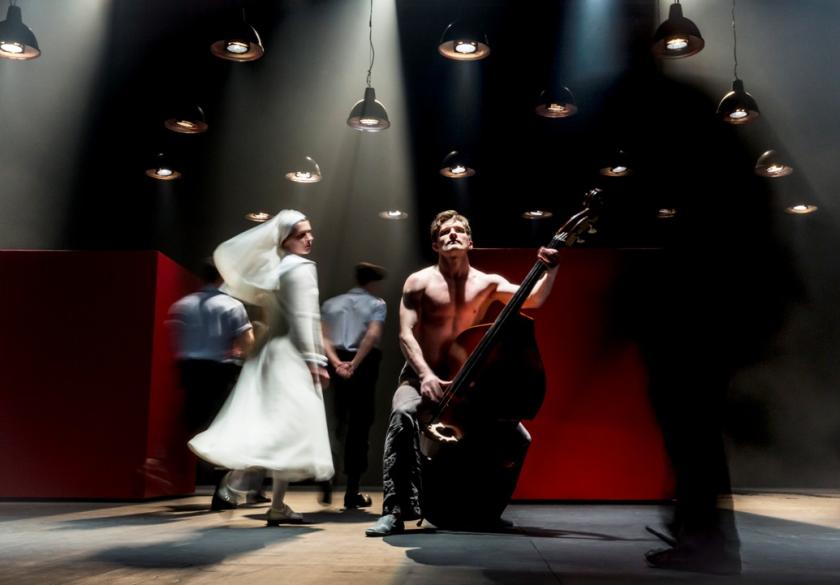



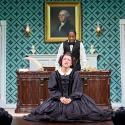


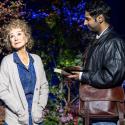


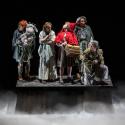



Add comment